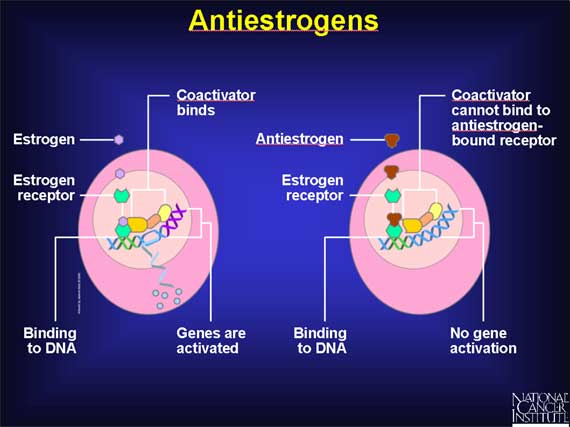|
Since estrogen can promote the development of cancer in the breast and uterus, it seems logical to postulate that substances that block the action of estrogen might be helpful in preventing or treating these two types of cancer.
This rationale has led scientists to work on the development of "antiestrogen" drugs that can block the action of estrogens and thereby interfere with, or even prevent, the proliferation of breast and uterine cancer cells. Antiestrogens work by binding to estrogen receptors, blocking estrogen from binding to these receptors. This also blocks estrogen from activating genes for specific growth-promoting proteins.

< Previous | Index | Next Slide > |